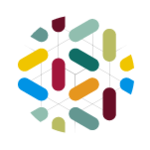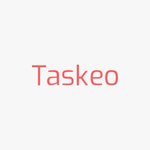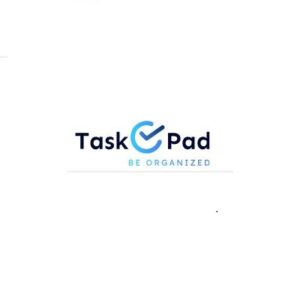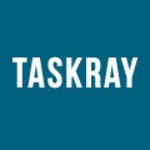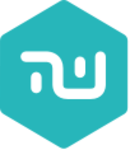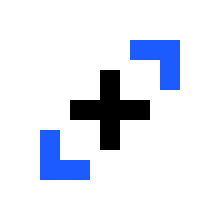Introduction To Project Management Software
Many professionals wonder what the best project management software is, and this question is critical. Businesses are on the lookout for the most efficient programs to speed up assignments and reduce costs. The right project management software makes all of this possible. These applications unify roles and improve team cooperation while enhancing analysis and visibility. Simply put, a single software solution can be a mix of budgeting, planning, analyzing, and messaging capabilities, among others, all in one. During the execution, groups can rely on these applications to keep everything on track.
In this full guide, you'll get all the tips you need. Then, you can proceed to check online user reviews or make your own project management software comparison.
Basic Functions And Features You Must Know
When you search for the right software, try to find the project management software that caters to the following primary functions:
- Project planning
Managers can use project mapping software to plan assignments based on timelines and goals. - Task management
This feature allows for senior leaders to appoint tasks and measure performance. - File sharing and collaboration
A collaborative project management software has file sharing and communication capabilities for improved cooperation and goal attainment. - Calendar and timesheets
These capabilities help meet deadlines and improve coordination across groups and owners. - Time tracking
Your software should have the option to track the time spent on all assignments and to maintain records for everybody involved to see. Project timesheet software is ideal for this. - Risk management
Unforeseen circumstances can come up. An app makes it easier to solve and reduce the negative impact of such events. - Resource planning
One of the top features you can expect in your project management software is resource planning. Proper planning of time, money, and personnel is essential for success.
What Is Project Management Software?
Project management software is a technology solution used in planning and administration. The software application can have capabilities for planning, budgeting, and resource allocation, communicating and document sharing, and change management. That is to say, this software is used as an oversight and administration system. It plays a critical role in cost efficiency, compliance, and quality improvement in execution. Moreover, it helps keep track of assignments to meet deadlines and align all efforts with the broader business strategy.
Project management programs have a variety of uses, such as facilitating:
- Scheduling and planning
- Delegation and monitoring
- Resource management
- Time tracking
- Reporting
- Documentation
- Collaboration
- Risk management
Which Businesses Can Leverage These Tools?
The majority of the industries is now using the software in various operations. Whenever the right project management program meets the proper usage, it leads to improved results. Hence, PM software solutions lead to automation and efficiency with a wide range of possibilities.
The leading industries that use the PM software are:
- Construction
- Event management
- IT and software development
- Manufacturing
- Engineering
Groups that can benefit from the solution include:
- Project managers
- Marketing agencies/departments
- Team members
- Project sponsors
- Business analysts
Go ahead and take a look at project management software reviews to discover the best fit for your business needs.
What Are The Benefits Of Using Project Management Software?
Effortless Planning
Usually, supervisors must create schemes that show assignments, milestones, and schedules. Also, they will be managing project dependencies. Well, various software solutions feature Gantt charts or Pert charts software for this kind of planning. Thus, you can use the software to create schemes that clearly show each task's requirements and the team members. With the right project management program, you can allocate assignments to your groups—in a way, a little like the Kanban project management boards. Not to mention, you can prioritize work, schedule assignments, and organize everything in one place.
You will be able to use interactive planning templates, charts, and assignment lists to speed up the entire planning process. Your schemes will have a higher chance of going according to your expectations, considering how these solutions improve visibility.
Software solutions are valuable because most people in management positions are often looking for a starting point, something like a skeleton that they can flesh out with specific details. They understand that the initial planning must capture the expertise and experience of their people. Therefore, planning software is considered a credible starting point to create schemes that build confidence in everybody involved.
Improved Collaboration
By using these programs, your groups can update their assignments, participate in discussions, and add attachments and comments for improved collaboration. Similarly, supervisors can update each assignment with a due date and track advancement as groups implement their deliverables. Your diverse teams can use this anytime, anywhere, relying on set roles and key deliverables for efficient execution. Team leaders can keep schemes up to date with real-time editing and auto-planning capabilities. Also, if they use project capacity tracking software, they can improve efficiency.
Enhanced Resource Management
Resource management is an essential part of the mix for success. In various cases of collapse, the cause is often poor resource planning. It would help if you had an effective resource management strategy to put your groups and equipment to good use. But resource management is among the most challenging areas of management. It entails resource allocation, balancing, and coordination. As an example, a manager is directly responsible for solving resource conflicts among different groups and tasks. They are also responsible for efficiently allocating limited resources.
To efficiently coordinate resources, supervisors often have to identify each assignment time and resource requirements. To put it this way, it is a time-intensive procedure that involves breaking down activities into smaller work packages. The team leaders then have to sort all the resources available.
Well-designed project resource management tools make the above work easy. You can use capabilities that enhance resource allocation while improving visibility into resource usage. You can create schedules with a few simple clicks and apply fast changes.
Beyond that, you get capabilities for budgeting and predicting your spending. You can add tentative people and assignments to organize your resources wisely. Often, project management programs also come with capabilities for monitoring resource usage rates. This will help you and your groups in the long run.
Document Sharing
One additional benefit of using such software is that you get to have everything centralized in one place. The result is greater control over your groups, budgets, documents, and notes. It becomes easier to track changes to drawings, blueprints, or invoices, for instance, and that helps accurate decision-making. This is also very useful if you're on a remote work policy.
What's more, having all the attachments in one place reduces the risk of them getting misplaced. Your team members can find them easily without having to waste time searching in drives. This is convenient when a client is waiting for an urgent report. It can also be useful when a user needs quick access to their expense records.
Added Security
There is greater security in sharing information from your own software compared to third party platforms. This is because you have improved control over who can read or edit attachments or transfer and print them. If you're using a third-party platform for project management file sharing, you can't confidently guarantee the safety of your sensitive information. For instance, you can control what attachments are shared with certain people. You can allow reading and writing rights for senior team members and reading rights for junior members. Also, document sharing done by your software helps keep costs low. Because you can store and share attachments in one place, you won't have to invest in a third-party file-sharing solution. Simply put, it removes the need to buy extra storage space and hardware.
Improved Team Cooperation
In addition to the above software benefits, these solutions are designed to improve team collaboration. This type of software empowers your employees to collaborate on assignments by discussing costs, timelines, dependencies, and workloads. Using that kind of software, you get to keep everybody up to date. Therefore, your people will know what to work on at all times since assignment lists and priorities are visible to everybody. As a result, everybody involved can stay aligned with continuous, error-free, and fast-paced delivery.
Additional benefits of collaborating through this software could be improved resource utilization, improved team supervision, and efficient risk management. Most of the dependable software in the market can be used with remote and distributed groups. With the guaranteed collaboration, assignments can be accomplished promptly, even when groups are in different parts of the world.
Not formally part of a team? No problem. Even if you do project management as a freelancer, you definitely need a software solution to help keep track of your cases.
Real-Time Reporting
Live monitoring is a must for success in any given undertaking. Real-time project management software enhances monitoring across all stages. Team leaders and stakeholders can get deep insights into performance. As a result, they can depend on such software to help them with decisions because all the facts are in one place.
A lot of assignments often stall because groups are selective in their analysis. In other words, they only report on good news, leaving out the bad news. This kind of biased analysis increases risks and costs down the line. You can rely on this software to eliminate this bias.
Because data is available in one place and various formats, team leaders can easily analyze and build comprehensive reports. New software solutions come with functions for creating performance reports, situation reports, and others in just a few clicks. What's more, some applications automate the whole analysis function. For instance, timesheets update automatically for every accomplished task. This improves the accuracy of the entire procedure and allows your people to focus on critical assignments.
Effective Communication
Client meetings can bounce or get started late, leading to frustrations and time waste. A software solution prevents that. Clients can easily log in from where they are, access your assignment board, and evaluate your work. They can then add comments or request changes in specific areas. The result is an improved understanding among the people involved, as well as significant time savings.
Even with internal groups, this software forms the basis of reliable and traceable communication. Groups can find reliable information on these platforms for precision in task execution. With enhanced communication, your people will have an improved ability to discover errors early on and correct them. You get to keep things under budget and on schedule successfully.
Meeting Deadlines
Most groups have a hard time meeting deadlines. Even with hard work and dedication, assignments are often late. For instance, in the IT sector, most implementation tasks overrun budgets and timelines by more than 200%. Since missing deadlines has negative consequences for all parties involved, supervisors require a solution that enhances planning and performance tracking.
Using Gantt charts on your software can help. This feature, which is found in 99% of all applications, is a vital software for planning activities and tracking schedules. Having this information will ensure that your groups can get assignments done on time and meet deadlines. They will easily see what needs to be done and their role in overall goals. They can then organize their time as necessary to achieve timely completion.
Additionally, most applications support schedule management assignments, such as determining delivery dates and project management milestones. You also get a high-level overview of risks and possible setbacks to the timely completion of assignments. Clients can use the analysis, communication, and collaboration capabilities on these platforms for information sharing and faster approvals.
Deployment Options
Any business can use this software in its operations. Once you decide that you will use it to improve your procedure outcomes, you will have to think about deployment. The performance and effectiveness of your management can be largely impacted by the deployment model you choose.
When choosing a deployment option for your application, consider the size of the IT team you have in place. Some deployment models might require you to expand your IT department, while others can shrink them. You should also consider budget, information security, and the strength and reliability of your network.
Don't forget, in eLearning Industry's directory you can find and compare the top project management software in the market!
Hosted Model
Plenty of software vendors will allow you to run your apps from their servers. These are always located in safe and secure data centers. You maintain ownership of the software but you pay monthly to have it hosted in the provider or third-party server. The advantage of project management software that is hosted is that the host handles all the software management functions. These can be backups, security, and server maintenance. The hosted deployment model for apps can be ideal for businesses with small or non-existent IT staff. Furthermore, hosted applications have a mobility aspect. You and your groups are able to access the software solution at any time on any device.
On-Premise (On-Prem) Model
On-prem is an old-fashioned model of software deployment. You buy the software and install it on your server and computer hard drives (each of your computers). With this kind of deployment, you are more autonomous. You won't have to follow up with anyone to update your software like in the hosted model. You also get improved control over your information and access control.
Keep in mind that project management desktop software exists only in your servers and hard drives. Therefore, you will require a bigger IT team for management. Take, for example, provisioning (to ensure availability) patch management (running developments), and security. All these roles will rest squarely on your internal IT team. And again, you will have to think about the costs of in-house servers and software licensing.
Obviously, there are several PM programs that offer a variety of deployment options including this one. So, make sure to check more details to find out which option suits you the most.
Public Cloud Model
Most software vendors are shifting focus to the cloud. Of course, this is the exact opposite of buying the solution. In this case, you rent it when you require it through a delivery model known as Software as a Service (SaaS). Project management SaaS software is beneficial to both vendors and businesses. The main advantage of the public cloud deployment option over the other models is cost efficiency. You pay for what you use. Take the case of a small business. If they need to use a software solution for less than a week, they won't have to commit to long-time costs. That is to say, expenses for licenses, servers, setup, and maintenance.
Private Cloud Model
Mature businesses and those dealing with sensitive assignments should consider applications that support deployment on the private cloud. For instance, if you are working with the Department of Defense, information security is critical, in capital letters. Using a public cloud, in this case, might lead to risks that attract fines, penalties, and contract cancellations. With a private cloud, you are the only tenant. Thus, self-hosted cloud-based PM programs might be more suitable for your business needs.
You don't share public computing resources—it is your network, your operating system, your storage, and your servers. The benefits can be improved security and compliance, availability, and scalability that match your requirements.
Hybrid Model
The hybrid deployment model is a mix of public and private and cloud environments. You can switch between the two environments without losing information and performance. The hybrid cloud option enables organizations to support their remote and distributed groups with on-demand access to information whenever they need it. In other words, you can move sensitive information on to your on-prem servers while allowing key application capabilities to be accessed through the public cloud for your people in various locations. You get more control and security over your information. It is also possible to reduce costs by turning to public cloud computing resources when the software's operational demand increases.
Customer Types For Project Management Tools
Project Sponsor
The project sponsor is the lead person. They are members of senior management and they have a direct investment in the outcome. A sponsor works closely with the manager. They rely on applications to approve goals and supervise planning. Furthermore, a sponsor will use the application to help resolve conflicts and remove setbacks. They can instantly view reports on the platform and sign off on all approvals needed for the goals of each phase. While the sponsor does not manage the day-to-day activities, they play essential oversight roles. From setting objectives to approving budgets and changes to schemes, success in their roles demands the use of a reliable application. In that case, the use of a project ROI calculator is encouraged.
Executive Sponsor
The executive sponsor is the topmost member of the team. In other words, they are the ultimate decision-maker in all matters relating to the project. Therefore, they require software for visibility and communication on the scope of the assignments. Additionally, they rely on timely reports to update funding or create changes to the scheme's direction. An active and well-informed executive sponsor can improve the chances of success. These experts have high-level responsibilities that involve focusing on strategy and creating the right conditions for success. If you hold this title, you will need to use a software solution to gain detailed knowledge and understand how it aligns with the business strategy.
Project Manager
As a manager, you play a direct and primary role in the implementation. The right application can help you achieve successful completion. You can use the solution to ensure that the project progresses under the specified time and budget. It is also the role of supervisors to ensure that resources are well allocated. Therefore, the resource management capabilities of a software solution come in handy. As well, the system makes it easier to maintain and manage the right relationships with stakeholders and contributors.
Business Owners, Clients, And Individuals
In this case, the owners of the project can be individuals, groups, and small, medium, or large-scale businesses. They have business objectives for what is being undertaken, and a software solution plays a critical role in that. They can keep everything on track for success through regular access to reports and communicating with executive sponsors and supervisors. It is not possible to attain success without the input of the client. If you are the owner, final approvals are run by you. After all, you hold the money and own the goals and milestones. By getting consistently involved in it through the software solution, you can achieve significant cost cuttings and faster goal achievements.
Consultants
The consultant is an individual expert or a group of people who bring their extensive skills and experience. They advise supervisors and clients on efficient practices and approaches that promote compliance while reducing costs. Consultants participate in all the phases of planning and implementation, and as such, they require applications for communication and visibility. Using software solutions, these experts can improve planning and execution processes via timely reviews and feedback.
A consultant's daily assignments involve managing budgets and relationships to reach organizational objectives. They play a direct or advisory role in planning, creating, and executing schedules for the timely completion of assignments. All these roles require the use of a reliable application. With that in mind, the right project scheduling software would be very useful here.
Business Types For Project Management Tools
Small/Medium Businesses
The right project management software for a small business can be very valuable. You should use such a software solution to easily stay on budget and on schedule. At the same time, you can keep control of your project and establish accountability for all tasks involved.
Large Enterprises
Your software solution may not scale up efficiently from a small business to a large enterprise. However, software that is specifically designed with project management for an enterprise in mind exists. This kind of software solution is more efficient when used to support a large number of teams.
Public Administration
Project management in the public sector can be challenging. That is because public organizations have to deal with different stakeholders from different departments. Consequently, each of them imposes a new set of conditions and limitations. There are many software solutions out there that can help you deal with situations like that.
Some Licensing Options For Project Management Tools
Here you can see the most popular types of project management software paid licenses. There are also options for project management software with free license or open source project management software, but generally, they are not as powerful or as often updated as these.
Use Time License
A use time license defines the time you have access to the software solution. The time is metered to a certain point, after which you will no longer have access to the management program. You will be prompted to buy another use time license or upgrade to an unlimited software license. Most software solutions will notify you to renew the license in advance before it expires. Use time license is closely related to consumption-based licensing. This is a type of metered licensing where you only pay for the actual usage of the software. "Consumption," in this case, is defined as hours of use or system logins.
Perpetual License
A software solution may have a perpetual license. In other words, you can buy the solution once and use it forever. Under this license, once you buy the solution, you can use it as you desire without incurring any further charges from the owner. Nevertheless, you might have to pay for upgrades, fixes, and patches in the course of ownership. For SMBs that want to reduce costs, the perpetual licensing model is the most common approach for implementing software solutions and other business applications. However, software sellers are moving from this to cloud models that bill usage based on time and consumption rate.
Feature License
The feature license limits your usage based on the specific capabilities of the software solution. In feature licensing, the software vendor controls pricing with features; users pay a higher fee to access more and advanced capabilities. A feature license model is, in fact, a type of metered license. It can be a cost-saving alternative to the other types of licensing. Businesses get to choose and pay for capabilities that are relevant to their processes and workflows.
Pricing Models For Project Management Software
Free
You can find and use free project management software with relative ease. Although this is something that can help you if you are just starting out, you will most likely need to upgrade sooner or later.
Free Trial
A free trial on project management software is usually offered on all of these options in order to help the customer make a more informed software purchase decision.
Consumption-Based Pricing Models
Consumption-based pricing is similar to SaaS cloud delivery models. You pay for the usage level of the software which can be calculated based on the number of days you use the solution or the number of users you support.
Package-Based Pricing Models
Typically, under this pricing model, the software vendor will provide a tiered subscription package. You can choose a package with fewer software capabilities at a lower cost or one with more capabilities and instant support at a higher price. This can also include freemium project management software.
Monthly/Annual Pricing
You can get a subscription to project management software on a monthly or yearly basis for a specified number of users. Usually, vendors offer great discounts for long-time subscriptions. That is something you can use for cost reductions if your project has a long-life cycle.
One-Time Purchase
One-time purchase project management software has all its features activated from the very beginning, and you can keep using it indefinitely.
Top Features To Look For In PM Software
Calendar And Timesheets
Access to the calendar, timesheets, and contact lists can enhance productivity in various ways. Team leaders can easily update assignment schedules, schedule meetings, and track performance with timesheets. In addition, contact lists speed up issue resolution since groups can talk to each other with assured speed and availability. Effective time managing and tracking lead to improved planning, accurate resource allocation, and improved precision. Therefore, when choosing the ideal software solution, consider capabilities such as calendars, timesheets, and other tracking software to improve development.
Risk Management
Uncertain conditions might have powerful negative effects. From the start to the end, there is a chance of unforeseen situations emerging, having a big powerful impact on cost and timelines. In that case, the supervisors must enhance their risk management efficiency to minimize setbacks. Therefore, consider choosing a software solution with well-designed risk management capabilities.
Resource Management
Resource allocation and planning help groups divert resources to where they are needed for performance efficiency. So, it would be helpful to use software that offers resource management functions and capabilities. It is convenient to use a software solution that can help you track, plan, and calculate expenditures and efficiently distribute employees.
Third-Party Integrations
Your groups can work faster and accurately if the software solution seamlessly shares information with your existing business apps. A solution designed for third-party integrations enhances business processes across all departments. When finding the ideal software solution, consider a solution that supports integration with word processing apps, your blog, OneDrive, Dropbox, Microsoft Teams, Slack, Trello, and Google Drive.
It's recommendable that when buying a software solution, one should check and see what business applications the software can connect with. Compatibility with a long list of apps is an indicator of improved usability when you implement the software solution.
Expanded Visualization
A single project can have multiple assignments that are further broken down into subtasks. Therefore, the most efficient software solution should allow you to create and distribute assignments and update them with agility throughout the entire course. The increased visualization of functions and performance is integral for improved resource distribution and meeting client deadlines.
Visibility leads to improved decision-making. Supervisors and team members can track assignment statuses through all the stages. Moreover, the groups can manage assignments and elevate efficiency on execution. For all these functionalities, consider a solution that features control panels for effective task management.
Workflow Customization
Sales groups may not have to be looped into HR assignments and reports, but the business manager will have to see all of them. Is it possible then for the solution you have in mind to enable users to customize functions to their assignments? With the right solution, IT groups should have the flexibility to turn off messages and alerts from commercial teams, for instance, for a smoother and distraction-free experience. Also, the right software solution should cater to all the work styles of your team. Customization functions can help your groups work effectively without feeling like they are struggling.
Collaboration And Mobility
Collaboration is essential. Thus your system should enable you and your groups to collaborate on everything you work on. Therefore, the right software should facilitate a smoother sharing of attachments, information, digital cards, job status, timelines, and assignments. Even better, an increasing number of these types of software now offer chat and interaction capabilities that can keep everyone on the same page. In addition to looking at collaboration capabilities, consider the solution's mobility. The modern manager is always on the go, in client meetings, or running sourcing errands. With the right solution, you should be able to do everything via the phone, everything that you can do on a laptop or desktop.
Utilizing The Best PM Tools For Specific Use Case Scenarios
1. Information Technology
- Planning
eLearning software vendors, for instance, can help education software development groups to organize hardware/software installations, roll-outs, and patch management with real-time visibility into the progress—like Wrike. - Planning IT assignments
With Gantt charts, control panels, and timesheets, IT supervisors can appoint tasks and get insight into workloads across global groups. - Reporting and visibility
Stakeholders can get analysis insights from dashboards, while development groups can use project management portfolio software to update portfolios anywhere. - Keeping groups connected
Team leaders can use the collaboration capabilities of the software, such as discussion boards and chats, to keep members up to date on developments. Some software solutions enable email alerts and personal feeds, dramatically enhancing communication and collaboration. - Managing resource and team availability
Through functions such as resource calendars, you can evenly distribute resources and groups across your assignments. These software solutions will help assure that no one is overburdened or underutilized.
2. Construction
- Task scheduling
You can assign tasks to anyone and track goals against your KPIs. Interactive charts on most of the software solutions enable collaboration with the back office, field groups, and stakeholders on all assignments and schedules. For instance, you can update schedules by dragging a taskbar to edit deadlines. - Managing groups
Contractors can use calendars to plan employee hours and schedules. In addition, they can track hourly rates and use workload planning software to manage overages. Any construction business that needs to make its projects work seamlessly can leverage project management programs. - Budgeting and resource planning
Project budgeting software makes it simple to track construction equipment and personnel costs. You gain broader visibility into costs and resource availability. - File management
Architects and contractors can use the software to store building plans, invoices, and other information. They can attach files to assignments and track development to records in real time. - Reporting
Whether it is a residential home building, commercial construction, or industrial construction, one can easily create and share reports on the web with team members.
3. Engineering
- Planning
With these software solutions, you can use charts to plan and schedule assignments in color-coded timelines. Team supervisors can link assignments to dependencies and update deadlines automatically. - Tracking time
A software solution can be used to maximize productivity. You can overview and prioritize assignments with assignment list capabilities. Similarly, you can view assignment advancement, comment on assignments, attach files, and keep attachments in one place. - Performance tracking
Engineering teams can pull live information from real-time analysis control panels to track performance. In addition, the ideal software solutions have custom control panels to help you track vital metrics such as timelines, costs, and team workloads. - Communicating
You can use chats and notification capabilities to enhance team cohesion and collaboration. Team leaders and members can receive alerts when a comment is added to a task for smooth collaboration. - Integrating software
Engineering groups that work with diverse applications can sync all of them in the software solution. For instance, they can sync emails, calendars, and accounting solutions for easy routines.
4. Event Planning
- Agile event planning
Event planners can use one of the agile project management programs to plan small, large, or huge events. Also, they have the option to track issues and maintain groups on the same page—again, like Kanban boards. - Smart reporting
Event supervisors can track expenses and allocate resources to groups within the budget. Reports on resource usage and allocation can easily be shared with stakeholders using report building and presentation capabilities. - Organizing people
You can organize the people in your event, from clients to vendors, colleagues, and event attendees. Thus you will ensure that their needs are met. - Balancing workloads
With the right planning software, event planners can effectively manage resources. Then they can maintain balance in workloads and assign tasks to the right people. Beyond that, the software solution can lead to enhanced visibility into what groups are doing for optimal resource usage. - Sharing information
Event dates, guest schemes, and budgets often have to be shared among stakeholders and employees. This can be done using the collaboration capabilities of the software solution.
5. Professional Services
- Team planning
Commercial teams and portfolio supervisors can use a software solution to plan, monitor, and manage their work. These professionals can stay productive and meet the needs of their clients and share that information with other teams. - Keeping clients informed
You can get insights and insider views from your software solution. It makes it possible to keep clients up to date on work goals through high-level reports. Information is reported in real time, giving stakeholders the latest information. - Collaborating on assignments
Using a software solution, you can cooperate with teams by adding attachments and comments at each task. The software makes it simple to share assignments with team members and keep everybody on track with goals. - Tracking performance
Commercial and marketing teams, for instance, can track the campaign goals. - Managing resources
Supervisors can track team activities using timesheets that auto-update on hours worked. It becomes easier to plan resources and expenses to keep costs low and maximize revenue.
6. Product Manufacturing
- Production planning
Production planning and scheduling in manufacturing are easier with a software suite. The reason is that production supervisors can create assignments about your product, subtasks, and dependencies that adjust when deadlines change. - Process visibility
They can use the software to gain a complete understanding of your production chain. Then they can spot problems and prevent lags. - Workflow management
A software solution can be used for communication and effective collaboration between departments. As well, team leaders can successfully track employee hours and manage overtime with timesheets and similar software. - Resource optimization
With a software solution, you get to stay on top of your budget and costs. This way, you get real-time cost developments and you can schedule employees and software to minimize wasteful spending. - Files management
It is possible to store attachments on the web in one place using a software solution. Then, teams can find important information with ease.
7. Nonprofits
- Charity campaign planning
A software solution can help plan and schedule nonprofit events and core initiatives. By using charts, you can create and attach files to assignments, create assignment lists, and stay on top of every detail. - Empowering teams with information
Leaders can get detailed reports that help save time and resources. Automated reports enable improved measurement of results and quicker adjustment to improve impact and reduce costs. - Create and track budgets
Software solutions meet the high accountability needs of nonprofits. Teams can create budgets and track expenses to ensure that that donation funds are used responsibly. - Managing teams
There can be so many unforeseen variables in the operations of nonprofits. For example, you might have to deal with sudden unavailability when it comes to the volunteering personnel. A software solution allows you to distribute human resources across several assignments flexibly. - Delegation and responsibility-sharing
A software solution makes it easier to delegate assignments. Also, it helps keep everybody up to date on their deliverables. Once assigned, you can monitor task advancement with dashboards and email alerts.
8. Academic Use
- Distance learning
This is one of the most common uses of academic project management software. In particular, it enables you to coordinate online classes and distance learning. - Transparency
Everyone involved in your work and your department will be on the same page as you regarding the procedures. There is a need for trust between faculty members, and transparency ensures that. - Lab management
If you are managing a lab for your department, this software solution can help you keep track of supplies and lab equipment. - Risk management
There is an ever-growing need to properly manage the risk of various academic endeavors. When you use a software solution to achieve this, you can take all relevant information into account and act accordingly. - Stakeholder engagement
When there are stakeholders involved in your institution, their input and engagement will help keep your plans on track.
Tips On How To Select The Best Program For Your Business
You can find countless solutions in an online software solution directory. These can be apps with many bells and whistles, from a user-friendly environment and collaboration capabilities to diverse analysis functionalities. That's okay, but it can still be challenging to understand which option will work best for your company.
Therefore, you have to ask several relevant questions, such as:
- What's your work style?
- What are your needs and challenges?
- What do your teams require?
- How do you have to plan your assignments?
- How diverse are the timelines and tendencies?
- Do you work with distributed or remote teams?
- How often do you require reports?
- What is the length of your project life cycle? How complex is it?
Looking For Answers
Your answers might help you decide on the fitting capabilities and functionalities you desire in your software. If you are in the market for the ideal project management solution, consider the following:
- Ease of use
Choose a program that offers the right features on a user-friendly UI. Also, it should complement your people's work style. - Easy-to-use task management
Good project task management software lets you sort your assignments in different ways. In particular, timelines, departments, or budgets, so that you can organize information quickly. - Visibility and notifications
Some software can alert the responsible person when a deadline approaches. Similarly, you should be able to visualize your timelines and dependencies. - Collaboration
With the right solution, managers and teams can share attachments internally with ease. Similarly, it should be possible to share attachments with external parties, such as vendors, contractors, and clients. - Communicating
Communicating efficiently is essential in facilitating team collaboration. Find a solution with a built-in messenger app so your team members can easily communicate with each other in real time. - Real-time reports
It is critical to have timely reports. An app with excellent reporting software makes it easy to collect information. Also, it can create reports on budgets, timeliness, performance, expenses, and resource allocation. - User Interface
In your comparison for the best project management software, consider the UI. A user-friendly interface is even more critical if the solution has a client-facing feature for client communications. Choose a platform with a modern and professional design that is a visual delight. Thus, it can enhance the image of your brand. - Risk analysis
Is your project is multi-layered with several moving parts? Then consider a solution that comes with a risk analysis function. Above all, they will help you identify, understand, and mitigate risk factors easily in its whole life cycle.
Importance Of Project Management Tool Integration
Software integrations allow interaction with other business software. Thus, they help ensure that each element is properly coordinated. A manager can also keep track of everything and everybody involved with confidence by using these integrations.
Other benefits can be:
- Improved experience
Providing a comfortable User Experience is essential for success. A well-integrated software system ensures that teams can access their information from anywhere and keep things running smoothly. - Speed in execution
Tasks such as manually transferring information from one system to another can increase errors. Also, they eat up a big chunk of your employees' time. Adopting software with the right integration can reduce time and minimize errors. - Higher visibility
When you deal with overlapping applications, it becomes hard to see the big picture in real time. An integrated solution can help you save hundreds of hours by granting you real-time visibility—again, like Wrike.
Which Project Management Software Is The Best For Your Needs?
The right software should be customizable to your needs. In addition, it should complement your management style. This means you should be able to configure the software to adapt to your unique roles. Then, the contractors can access information that is important to them. The right solution should also streamline workflows with team management elements. Consequently, it should make it easy to allocate assignments and keep every team member updated on processes and procedures.
Then again, given the rising trend of distributed teams and remote working, your software must be optimized for mobile. A project management mobile app will help your teams work and receive instant updates on the go without hiccups. Other factors that make an excellent software solution can be ease of use on-site or in the office. Both employees and clients should be able to pull reports and create and share attachments easily.
Top software solutions enable all the above in a secure and well-encrypted environment. That environment keeps all information and files safe from intruders. Be sure to follow this link for a list of the best project management software tools with reviews and comparisons between them.


